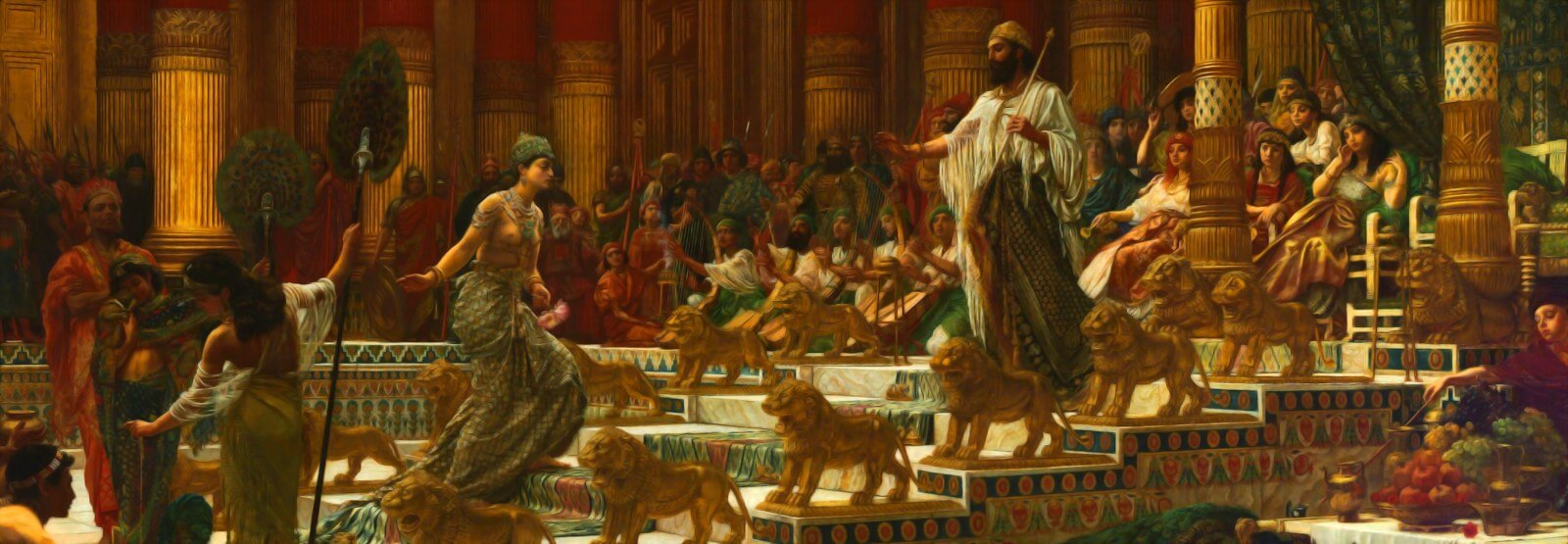Re:
Rastafari Beliefs and Practices
Sun, 12/Nov/23
Rastafari do not say “we” for plurality. They grow their lingo out of the Jamaican Creole, which is a dialect of English itself. They wear dreadlocks, and worship the emperor Haile Selassie I, believing he is a true messiah and a divine personality, also a direct descendant of King Solomon.
Livity is yet another Rastafari term for cosmic energy and a life force. So, I-tal works to increase livity.
-
Rastafari advocate unity with all things, believing every living soul on Earth is a “brother”, and this spreads far beyond humans. I asked once my Rastafari brother as I pointed to an ant – “And he?”, the dude replied: “Yes, he is my brother. Selassie-ai.”
-
Rastafari deny any violence in any form towards brothers, which are all living creatures on the planet! Rastafari do not usually protest, but when they do, they express their “fight” in reggae sounds. Apparently, not a fight in the Western mentality.
-
Rastafari oppose Babylon for the two reasons listed above.
Do all “rastas” smoke weed?
Nay, this isn’t true, not all Rastafari smoke weed – surprise! The Rastafari principal belief suggests the body is a temple of God, and they accept godsends (including marijuana) to take care of this temple of God and enhance the cosmic energy in it.
“Then God said: Behold, I give you every seed-bearing plant on the face of the whole earth and every tree that has fruit with seed in it. They will be yours for food” (Genesis 1:29)
-
Smoking weed for a Rastafari is a sacramental deal, the spiritual food for the mind, and a medium for meditation to feel universal energy and unity with Jah and oneself.
-
In a rare case when weed does not fit the body and/or the mind, making anything worse, some Rastafari followers refuse to smoke for sake of keeping the “temple of god” (the body) in a good shape.
-
The dominating majority of Rastafari, of course, smokes marijuana and blesses God every time and with every toke for that God gave to all of us such a generous gift.
Why do “rastas” wear dreadlocks?
The reason for wearing dreadlocks is a part of the same model, that the body of Man is a temple of God, and it’s better be not intervened. So Rastafari do not cut hair, because the latter is a part of the divine plan of God towards humans. The formation of a dreadlock is a natural process, and you guess, that “rastas”, those living in asceticism, do not go to a barber’s shop to make dreads. All goes natural way.
Rastafari do not say “we” for plurality
The religious meaning of deprecating “we” and removing it from the speech, is that every Rastafari is a part of God, where his body is a temple of God and at the same time a living man. Every living man describes himself as an “I”, a personal pronoun. Because everyone is an “I”, Rastafari do not say “we” for plurality but say “I and I”.
From the said, Rastafari tend to replace some leading syllables in regular words with “I”. For example, eternal becomes I-ternal, the creator is the I-reator, and an hour transforms into an I-owa. The name of the popular diet, the Rastafari exercise, derives from the word “vital” by silencing the leading “v” and making it “I-tal”.
The divine idea of an “I”, plural – I and I, also applies to the title of the emperor Haile Selassie I. Even though it is normal to use Roman numbers for counting princes, Rastafari believe that the trailing Roman numeric one in the “Haile Selassie I” title points to the divinity of the king.
I-tal diet of Rastafari
The word “I-tal” is transformed from the English word “vital”, but the “v” is silenced, removed at all, and the “I” is highlighted because they always highlight the “I” to emphasize the unity with Jah and the universe.
I-tal diet is a plant-based diet, where Rastafari practices borrow many ideas about how to limit food for I-tal diet from Judaism and Hindu. Thus, Rastafari as a religion is a sort of compilation and a blend of Hindu and Judaism, seh so (that’s how “say so” sounds in Rastafari dialect, we’ve found it in Bob Marley’s interview).
There is no strict rule about the I-tal as it is more a personal feeling about what strengthens the body and increases energy, and what does not, adhering to the purity of food. However, there are guidelines to start with:
-
Food is to be pure and delivered directly from the earth
-
Clay pots and wooden bowls often replace metal pans
-
Some followers decline metal at all, including spoons
-
I-tal declines meat, as it is not from earth, and it is dead
-
Fish may be acceptable, but seafood is less
-
Some I-tal practitioners avoid salt
What is Livity?
LIVITY is another Rastafari term for cosmic energy and a life force. So, I-tal works to increase livity. Why not they only inforced the i-letter by dropping the L-letter away, haha.
Is Rastafari Christian?
Not much.
Rastafari is not Christian, but the two religions share some prophets and the book. Rastafari, Christianity, Islam, and Judaism share the basics as they all are the Abrahamic religions (branches).
All Abrahamic branches take off from the same legends, and the same book, usually recognizing the same basic prophets. However, not all of them support the idea of the divine genealogy of Jesus, which is the core dogma making Christianity Christianity
Some Rastafari beliefs correspond to Judaism, such as their diet, called “I-tal”, but some beliefs, as a matter of course, are similar to Christianity.
However, the principal religion of Ethiopia is Orthodox Christianity, the same as in Russia and Greece!
So the emperor Haile Selassie was a Christian Orthodox. Jesus was not Christian, but a prophet for Christianity, while Selassie was not Rastafari but a prophet for Rastafari, simple as that.
Who is Haile Selassie?
The central personality in the Rastafari religion is the emperor Haile Selassie I of Ethiopia, who also happened to be the last king of the country. Rastafari worship Haile Selassie I as god, and he is also the second coming of messiah, described in the Bible, just like the first messiah was Jesus.

Haile Selassie in Civilization 5 videogame
“Know that the emperor Haile Selassie of Ethiopia is the Almighty. Wha’ dem want? A white God, well, God come black,” – Bob Marley.
Also, “rastas” believe, that the king of kings his imperial majesty Haile Selassie I is the direct descendant of a biblical royal couple of King Solomon and Queen of Sheba, and the land of Ethiopia is the biblical Canaan, the promised land for Rastafari.
Queen Sheba visiting King Solomon (by Edward John Poynter) the large image here
What does the “Ras Tafari” mean?
Haile Selassie’s name resulted from the coronation, which was somewhat an Ethiopian tradition to change the monarch’s name, less important for the present narrative. Yet more important, his real-world name, before his being-a-king, was Tafari Makonnen (no-o-o, he is a 100% Ethiopian prince, and he is absolutely not from Finland, whatever the surname may seem, and it makes me smile too)
The title of the crown prince Tafari was Ras Tafari as long as he used to be a governor of Harrar province in Ethiopia, where “ras” is a very word for a governor, or a duke, in the Ethiopian language.
Thus, Ras Tafari literally means Duke Tafari, the Haile Selassie’s name as a crown prince, a ruler of Harrar, and the icon of the Rastafari religion.
Rastafari Vocabulary
To make this post clear, we list several definitions Rastafari use. We already know who is emperor Haile Selassie I, and why we call the whole thing Ras Tafari. Let’s dig up deeper to find out what the Lion is doing here, and the importance of Babylon definition, so we pack all of it into this brief Rastafari vocabulary:
★ Jah — is the name of God in the Rastafari religion, the latter is the Abrahamic branch basically, along with Judaism, Islam, and Christianity. Thus, “Jah” is the same monotheistic deity for all Abrahamic religions, some call him Yahweh or Allah, yet he is one for all.
★ Haile Selassie I — is the last king of Ethiopia, the central person and messiah (what we call the second coming of Jesus) in the Rastafari religion. Whereas Rastafari believe, that the king of kings his imperial majesty Haile Selassie I is the direct descendant of King Solomon and Queen of Sheba, therefore a holy person and the deity himself, just like Jesus in Christianity.
★ Zion — is a biblical place, or a region, now located in Africa, in Ethiopia as of their belief, where the Rastafari have once moved from Israel in the prehistoric (biblical) times. Rastafari religion has rejected the traditional definition of Zion as a “spiritual place in the sky”, promoting instead that Mount Zion is the “heaven on earth”.
★ Babylon — Babylon — is every negative aspect of the “western culture”, which Rastafari religion opposes in the lyrics of ska and reggae, namely: the law enforcement, the government in its wide, and especially when it is recklessly unfaithful or going mad. Rastafari refer to the United Kingdom, the United States, and the Vatican as “Babylon” too.
How do you say “Haile Selassie” as blessing?
Rastafari say “Selassie” as often as Christians say “Jesus” as both use the name of their messiah for blessing. A full version is “Haile Selassie”, and “Selassie” is a short version for this.
I have discovered another curious fact on my quest to comprehend better the “rasta” culture: Rastafari also add the trailing Roman numeric “I” to the short version of the blessing, it becomes “Selassie I” slipping “Haile” out.
So,
– An English-speaking “rasta” would say [selasi-ai],
making “1” be an i-sound.
– A Spanish-speaking “rasta” would say [selasi-el],
converting capital “I” to “L”, because they look the same.
– You’ve got a good toke: you murmur “Selassie-ai”, or “Selassie-el”.
There are (at least) two monuments to Judah Lion in Addis Ababa
The Lion of the Judah tribe, aka Judah Lion or the Lion of Zion, is a historical symbol of Ethiopia, maybe because the royal family of Ethiopia descends from King Solomon, who was of the Judah tribe himself. Thus, Haile Selassie I is of the Judah tribe too, which makes the marijuana community accept the lion as a cannabis symbol under the influence of Rastafari culture. And, we can spot that Lion on the personal coat-of-arms of the emperor Haile Selassie.
Well, it is all about the Lion, and no surprise, lions are all around Addis Ababa, the capital city of Ethiopia. The first monument was erected in 1930 on the occasion of the coronation of Haile Selassie I (that is when he stopped being Ras Tafari and changed to Haile Selassie).
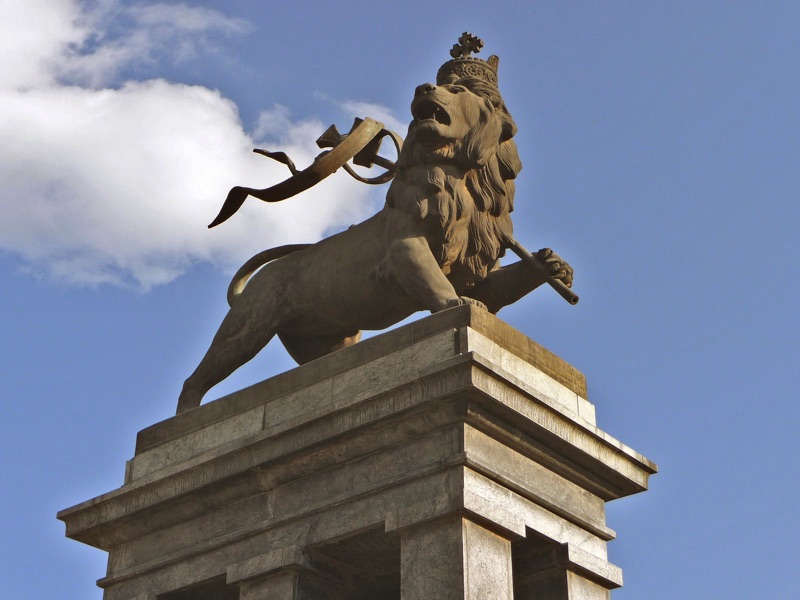
Judah Lion, Addis Ababa, 1930
Yet another Judah Lion (aka the Lion of Zion) in Addis Ababa got commissioned in 1954 by the emperor Haile Selassie I himself.
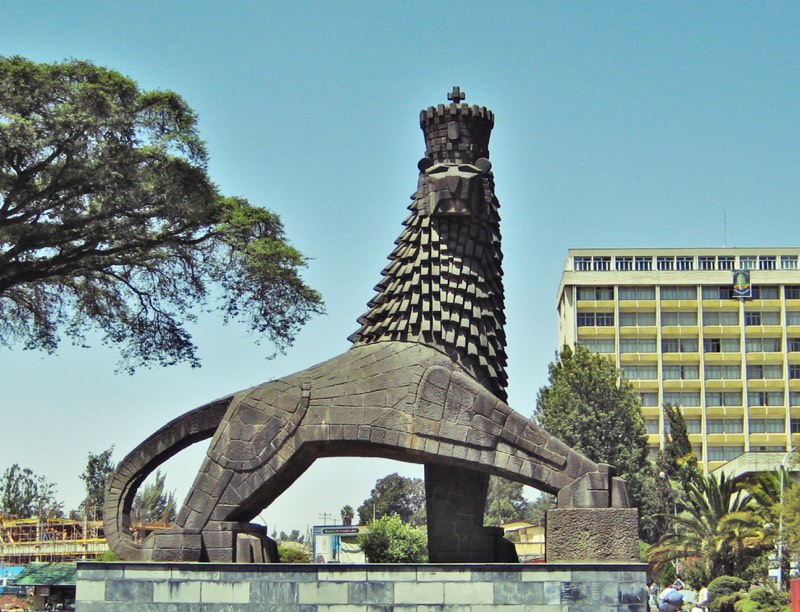
Judah Lion, Addis Ababa, 1954
Rastafari discourage the use of -ism and -ians suffixes
Speaking about the Rastafari’s representation of evil, the Babylon. We use the term “Rastafari” instead of “Rastafarianism” because the latter is… wait for that: oppressive, Babylonic, and very negative.
Suprisingly, the Merriam Webster dictionary confirms it:
1) “ism”, as a noun – an oppressive and discriminatory attitude or belief.
2) “-ism”, as a suffix – indicates prejudice, discrimination, or an abnormal state resulting from an excess of a thing.
https://www.merriam-webster.com/dictionary/-ism
Indeed!
Have you ever noticed that the Western culture refers to most of foreign religions and teachings adding “-ism” to the original word, such as Buddhism, Confucianism, Zoroastrianism, Hinduism, etc, but never say “christianism”? Try saying “christianism” to feel how hostile it sounds.
It is Hindu, and not “hinduism”,
It is Mazdayasna, and its practitioners hardly called it “zoroastrism”.
So Rastafari use the “Rastafari” word, discouraging “-ism” and “-ian” as much as they disgrace the Babylonic ideologies as a whole. Though, they protest peacefully singing, through the lyrics of reggae and ska.
Aye-aye, unbelievably, the reggae (and ska) are the rebellion songs!
Ska
Ska was a pop-version of reggae, called “bluebeat” in England, being a mix of jazz and blues. Ska is yet outdated and rarely in use nowadays.
Ska — is a precursor of reggae, developed in the 1950-60s as a mild protest against social and political conditions in Jamaica.
While ska rhythms seem happy and content, in fact, they are about the pain and suffering of the people of Jamaica under the dishonest governmental regime. Ska is similar to reggae but applies a softer manner of blues. My god, what on Earth can be even softer than reggae? Ska can be!
Ska introduced Jamaican drumming to the world for the first time, which has happened long before the transformation of ska into reggae. The famous ska titles were “Oh Carolina”, “Another Moses”, and “Babylon Gone”.
Female Corruptible Influence
Ska musicians expressed the deep personal pain they were gaining from the political forces and, surprisingly, the pain from the “corruptible influence of a female”. They’ve been promoting that the temptation of female flesh eventually leads in general to negative things: broken hearts, loneliness, and teardrops.
This explains a lot about Bob Marley’s “No woman, no cry” — while being romantic in sound, the lyrics disgrace the female role in society. Oops!
To advocate this provision, let me add that Woman is worshiped as the incarnation of love and a deity for tens of thousands of years in the history of mankind. Apparently, a woman clearly demonstrates the dual nature, just as gods do all the time.
Thus, the lyrics of reggae and ska do not necessarily mean anything bad towards women, but they support the divine duality of woman’s nature, just like so many cultures did for ages.
To understand the concept of divine duality of every Woman as she is an ancient goddess of life and war, try to think about water or the Sun: both create life, and both can severely destroy everything. Yep, that’s hot.
Only some of the Rude Boys were Rastafari
In 1965 in Jamaica, unemployed ghetto youths, 14-25 years old, living in the shantytown of Kingston, the capital city of Jamaica, formed a strong and well-organized rebellion force armed with knives, cutlasses, and guns. They became a certain threat to the middle class, looting houses and shops, clashing violently and successfully against the law enforcement, living only for “run faster, jump higher, fuck longer” as they claimed.
Rude Boys embraced the image of an outlaw hero and a symbol of a new generation opposing the system which (they suggested) produced unemployment and poverty in Jamaica. Guess that for “rudies” marijuana was not exactly a spirituality, and their behavior, righteous or not, can hardly match the “peace and love” approach of the Rastafari followers.
However, some “rudies” claimed and pretended they were Rastafari, adopting the Rastafari language, appearance, dreadlocks, and also consuming weed openly. Consequently, citizens of Jamaica organically associated Rude Boys with the already existing negative, lunatic image of Rastafari.
Rastafari in their turn desperately denied any connection to “rudies” by all means, and never encouraged or promoted any violent action towards other people in exchange for gaining their own liberty. The suffering of humans, regardless of their negativity, is out of the question too.
Rastafari and Rude Boys highlighted identical goals to “fight” poverty and oppression but indeed espoused two radically different ideologies.
Grounation day: “God is here!”
Only once the king of kings Haile Selassie has visited Jamaica, it’s happened on the 21st day of April in 1966, and the 4/21 day is celebrated ever since by Rastafari, and they call it “Grounation day”.
100,000 people gathered at the airport on the 4/21 of 1966, and 10,000 of them were Rastafari, who smoked bongs, all the time chanting “God is here!” — the long-awaited Messiah finally arrived on the island of Jamaica to liberate them and take them to Zion in Africa!
“We have to go to Africa to live with our brothers and sisters there. Blacks remember, our king Haile Selassie grants land space for us in Ethiopia,” — Rasta Historian, writer to Bongo-man, Rastafari newspaper, Jamaica, 1968
Well, their expectation of repatriation to Africa didn’t work that way. Even though there is a piece of free land in Ethiopia, that Haile Selassie allocated for the Rastafari community in Shashamane town, but the king of kings did not take all Jamaicans to that Zion after his visit of Jamaica.
Instead, Haile Selassie has spoken to Rastafari leaders and proposed a new concept to them — to refuse the idea of physical repatriation to Africa, to the biblical Canaan, the promised land, but replace it with the pursuit of political liberation of Jamaica.
-
Among other goals, the emperor Haile Selassie wished to influence the public opinion in the country, persuading political leaders of Jamaica that the “rastas” could no longer be written off as “dangerous freaks”. This made reggae commercially viable, and also allowed the Rastafari religion to take off for the global spread.
-
Rita Marley, the wife of Bob Marley, converted to Rastafari faith as she saw Haile Selassie passing by in his motorcade. She later said she saw a stigma on his hand when he waved to the crowd.
-
The “grounation” as a word in the “Grounation day” derives from “foundation”. We’ve mentioned how Rastafari invent words to stress Letter I’s divinity in the already hardly understandable Jamaican Creole; but this time, for the “grounation” word, Rastafari expressed the idea that the Haile Selassie’s touchdown in Jamaica felt like a foundation for them but as he touched the Jamaican ground it was actually the “Grounation”.
Haile Selassie influenced the incorporation of “rudies” into reggae
By the time of the visit of Haile Selassie to Jamaica, the “Rastafari music” was already transforming from ska to reggae under the influence of R&B. But the idea the emperor have thrown about the liberation of Jamaica made reggae more aggressive and political, as only “aggressive” reggae could be!
The reggae musicians reacted by applying to build the heroic image out of “rudies” (Rude Boys), demonstrating the virtual alliance between Rude Boys and Rastafari united from now on against the common enemy, the system that produced unemployment and poverty, the Babylonic evil.
From Ska passive crying Rastafari slowly switched to reggae struggle. The sounds of reggae changed to describe the society in the process of transformation. Also, the religious Rastafari became the political power, which promoted rebellion and liberation.
Peace and love!
The Western way of thinking may call a violent image of Rastafari fighting for liberation, disobeying the Babylonic government. However, in reality, Rastafari oppose the Western mentality, as they are the “silent protesters”, and the “peaceful rebels”.
“We are truly humble people whose response to evil is to flee from it,” — Bongo Dizzy in Bongo-man, Rastafari newspaper, Jamaica, 1968”
Rastafari express their claims and demands exclusively through music and never consider a violent action. Love and peace they also express in asceticism.
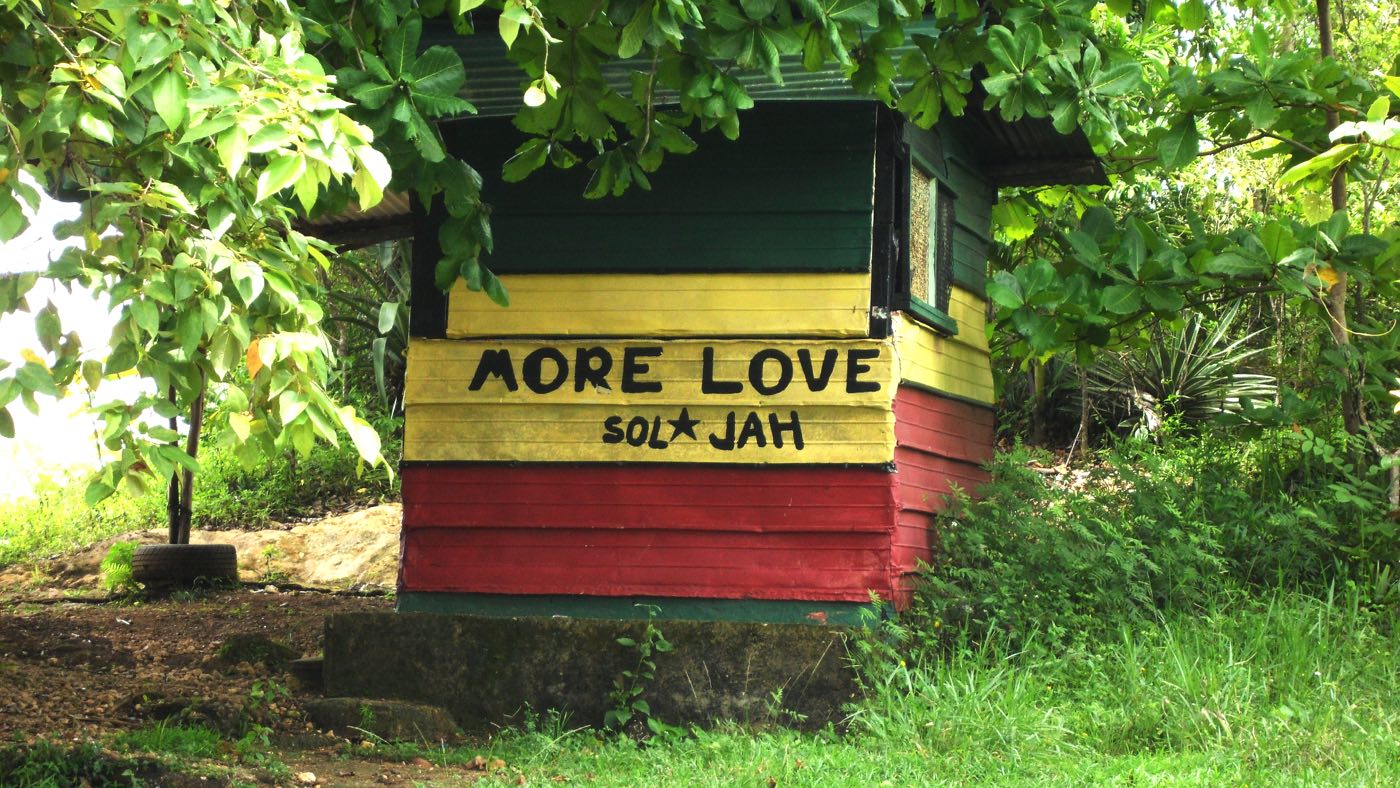
Rastafari shanty “villa” in Jamaica
Street names for weed in different countries
Fri, 11/Feb/22
Using different slang for weed from around the world is fun, undoubtedly. Even though marijuana street names have developed within stoners’ communities in different countries historically for hiding, yet another reason for weed slang is showing devotion to cannabis culture. It is the same explanation, for why so many words exist in languages for playing football or addressing loved ones.
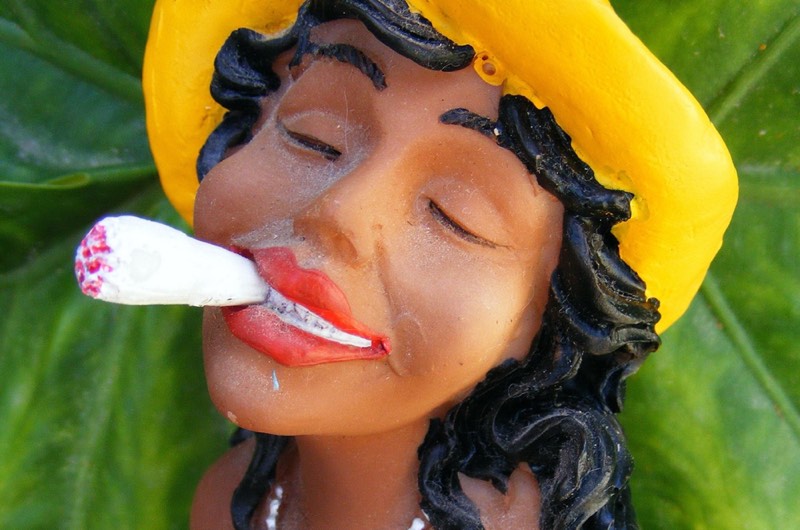
Mary Jane is Marijuana personified
Here we have shared a top-notch selection of the best weed terms, including their street names, from different countries around the world. It’s cool to have one or two extra in the vocabulary.
Common street names for marijuana in English
At the beginning of the last century, the now-official “marijuana” term was a street name for weed too. What they smoked was called cannabis, but marijuana landed in English as a nickname. The other traditional slang terms for weed are reefer, weed, dope, pot, grass, dank, loud, etc.
Marijuana (international)
Marijuana is an obvious combination of two Hispanic feminine names: María and Juana. The urban legend states that the word “marijuana” was designated artificially to support the war on plants in the United States in the middle of the past century.
The Latin (Mexican) culture was badly accepted by the American society of the time, and the law enforcement wished to advantage on a Hispanic nickname for cannabis against the marijuana culture. This is how María and Juana got bundled together to represent “marijuana”, and is doing so ever since.
1 – María is a name of Mary, the Mother of God.
2 – Juana refers to Anne, the grandmother of God.
In 1800s marijuana used to be a slang word for hooker
Another version displays that the marijuana word landed in the United States much earlier, in the late 1800s, from Mexico, again, where the double name “Maria Juana” was used as a slang word for both — recreational marijuana and addressing a random courtesan.
Mary Jane
Mary Jane as a weed term in its turn is a conversion of Spanish feminine names Maria and Juana to English. Mary is the replacement for María, and Jane is the equivalent for Juana. That is how Mary Jane has appeared for naming marijuana, also to personify it.
Herb
Herb is a widely used term for any weed, present in Bob Marley’s vocabulary, who flavored herb as a word. In the modern world, “herb” specifies industrial marijuana, from that we have cloth, construction, etc. Herb still keeps its original meaning too, yet rarely used this way.
Joint and blunt
— Joint is a traditional slang name for a rolled-up marijuana cigarette, and a general word to name anything rolled to be smoked as a marijuana cigarette.
— Blunt is a big and fat hand-rolled marijuana cigar (not a cigarette). People may call a joint of enormous size jokingly a blunt.
Spliff
Spliff is a more European word for a joint, rather than American. A spliff is usually smaller than a joint. Spliff is used to name a leftover of an unfinished joint (aka butt) regardless of whether that leftover was a joint or a spliff before burning.
Reefer
Reefer is slang for a joint or a blunt, already a history. You may be 99% sure the speaking person either is old or communicates a lot to the elder generation of stoners.
What do we call “filters” of hand-rolled joints?
A tip of a hand-rolled joint, which we hold in our fingers when smoking, is called a “roach” or a “crutch”. Both words, roach, and crutch, are used in equal measure, we hardly can determine which of the two is more popular in English, both are.
Slang for high-quality cannabis in English
Frosty nug vs sticky bud
Nug and bud both stand for marijuana flowers, usually of supreme quality. However, bud is also a lovely name for any marijuana flower, while nug is for an exceptional flower, when you suddenly feel “bud” is an understatement. Bud is like “a bud”, and nug is like “the nug”. Interchangeable in most cases.
Gas vs dank
Gas is a slang word for weed, it alludes to the famous Diesel smell of the Diesel marijuana strain of high-end quality. Gas word for weed is already not limited to the Diesel strains but fits for any exceptional weed. Yet another weed word in slang to specify the quality of weed is Dank, which may also work as an adjective.
Loud
Loud is a relatively new word in weed slang, and it stands for high quality too. It is loud in terms of smell than stinky nugs produce, and it suppresses all other smells.
What is dab?
Dab is a small piece of hashish, marijuana resin, or concentrate to puff at once. For this, we use a bong, a pipe, or a dub rig. If no “special equipment” you have to take a dab, you can also put a dab into a hand-rolled tobacco cigarette (if you are a smoker). Anyhow, dab stands for a piece of concentrate of a size to take one hit.
Marijuana street names in different countries
How to say marijuana in Spanish slang?
Slang words for marijuana are not totally equal in different Hispanic countries, however, there is a universal weed word everyone understands, it is “porro”.
Pórro
In all Spanish-speaking countries, in Spain and in Latin America, the universal slang word for weed is “pórro”. The same word refers to a single joint, to a single bud, and may mean a handful of weed, depending on the context. Any weed is porro, but a joint is a porro too.
Porro derives from the Latin word “pórrum”, which stands for leek. Porro has landed in Spanish as ajo porro, where ajo is garlic, and ajo porro together is leek. Count it as a hint, if you need an excuse, once you look for porro in a fruit market, ha-ha.
Cogóllo / cógo
For the flowers of higher quality they use the “cogollo” slang word. They pronounce it [cogósho] in Latin America, and [cogóyo] in Spain, Cuba and Mexico. The word cogollo, used for marijuana of high quality, literally means “bud”, the plural is cogollos.
Flores
Flores, just like cogollos, is a normal word, and it means literally “flowers”, any flowers in regular language, and marijuana flowers in slang. Both flores and cogollos may describe buds of excellent or fair quality. A single flower is flor, plural — flores.
Mota
In Spain and Mexico, the most popular slang word for marijuana is “mota”.
Faso
Faso is a slang word for weed used in Uruguay and Argentina, interchangeable with porro. Faso is less known compared to all-purpose porro. Stoners know what faso is, but folks who don’t smoke know porro but know faso more rarely.
Slang words for weed in Brazil
Maconha
in Brazil the main slang word for marijuana — is maconha. Keep “h” silent like in Spanish, not pronounced at all but it modifies ‘n’ into a soft ‘ñ’. It will be macóña if we write in Spanish.
Fino
A joint in the streets of Brazil is called fino, the same word describes “thin”.
How to say marijuana in Africa
Chamba
In Malawi and their neighboring countries Zambia and Tanzania they call marijuana — chamba, which is a marijuana strain growing in the north of the country: a highly psychoactive pure Sativa with the aroma of sweet fruits, also spicy. In Malawi, Tanzania, and Zambia the word chamba is also used to refer to any marijuana of fair quality.
Marketed in the US as “Malawi Chamba”, top-notch chamba and chamba seeds may be found in dispensaries and seed banks, it is the real African strain.
Dagga vs zolo
In South Africa, Botswana, and where else the Afrikaans language (the mix of African languages and Dutch) is spoken, a common slang name for any weed is dagga. Another weed word is zolo, totally interchangable.
What they call marijuana in India?
Ganja
In India, they use “ganja” to refer to marijuana. Hardly accounted as a slang word as it is the most original name for marijuana. In India ganja is often legal or decriminalized for religious use, depending on the state.
In the city of Varanasi, one of the world’s oldest continually inhabited cities, and one of the most sacred places of the Hindu world, aged 2500 years, weed is used freely to exercise religion.
Bhang
The slang word “bhang” applies to hashish. Also, bhang is marijuana-infused milk cooked with spices, where hashish is a dominant ingredient of the recipe. Such highly psychoactive edibles, infused with bhang, are available in private shops of Varanasi over the counter for religious purposes.
Slang names for weed in Sri Lanka
Ganja
People of Sri Lanka, of course, know the word “ganja”, which is not a slang name for them but just how it is called, the original name of weed.
Kandi
In the middle of Sri Lanka island, there is a county, called Kandi, in the mountains. In their land grows strong potent marijuana, and they call this strain by the county’s name — kandi. Often happens, in such cases, kandi nowadays is used as a general name for high-quality marijuana.
What the call marijuana in Russia
Plan
Plan is the word for weed in slang in Russia. In regular language “plan” is the same noun with the same meaning as “a plan” in English, and this is the most common and recognized weed slang for marijuana. Plan is a universal neutral term with minimal negative aspects possible.
Kosak and dudka
Kosak and Dudka are absolutely equal, both mean a single hand-made joint. Pronounce kosak as [kosiák] with soft ‘s’. Like you read /cognac/, read the same way /cogsac/ (hope the hint helps).
Russians rarely roll joints using regular papers. However, the most traditional way is to use “Belomor”, cheap old-school cigarettes made of the same finest materials during the latest 70+ years. You make one belomor empty of tobacco, and reload it with marijuana, as if you are in the Treasure Island book, and you load an old-fashioned cannon with powder. Totally not a classic rolling, though.
Anashá
A little bit old-fashioned slang word for marijuana — is anashá, it comes from somewhere around Kazakhstan, the word might be Persian origin, means “the queen”. It sounds mild and charming.
Bóshki
Bóshki is a noun in Russian weed slang for buds of a better quality. Bóshki is always plural.
Slang name for weed in Germany
Hanf
In Germany, the slang word for weed is “hanf”, literally hemp.
Slang names for weed in France
L’herbe
French slang word for weed is l’herbe, literally “herb” (‘h’ is silent).
Le beuh
French use le beuh to refer to marijuana of any quality, i.e. marijuana in general. The word “le beuh” literally translates to “weed”.
Kif
Kif is originally a Moroccan slang word for hashish. Subsequently, France uses kif to refer to hashish too, due to the proximity to Morocco with their famous hashish traditions.
What do they call hashish in Morocco?
Morocco takes a very special place in the cannabis stage. Moroccan hashish is the world’s well-recognized product of distinct quality. Morocco is among the top largest producers of marijuana in the world, UN reports. The slang term for hashish in Morocco is “kif” which has a wider cultural spread far beyond the boundaries of Morocco.
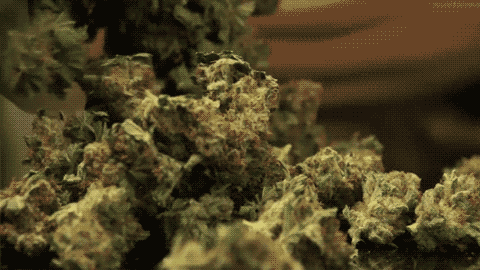
That’s weed.
Marijuana in Colombia (2022 chart)
Mon, 20/Apr/20
The Colombian unit of “Forbes” suggested in 2020 that the marijuana market in Colombia should reach 166 million dollars in sales by 2025.
How is the recent Legal Cannabis in Colombia going?
In 2016, the Government of Colombia has negotiated peace with FARC, the world’s infamous cocaine syndicate, also referred to as a liberation army.
So, the 50-year long civil war has ended, allowing the legal marijuana industry to flourish, supported by the government which is surprisingly fast in law-making, licence-givings, and other legal weed’s stuff ever since.
For example, Jim Belushi invests in Colombian marijuana market, he runs a marijuana farm there.
Drug-dealing image of the past plays a positive role for Colombia today
Colombia bears a certain image of a drug-dealing place, mainly for its cocaine exports which lasted for half a century, supplying black markets of all countries in the planet.
Colombia was the place where the war on plants went a little further than a usual “cops suppressing children”. But it shaped itself in a form of a real full-scale civil war between the heavily equipped armed forces from the both sides, the government and the syndicate, aka FARC.
On the other hand, they ran drug-business very well, so well that “the Colombian” eventually became synonymous for “Quality” for drugs.
The war has gone, the Colombian government signed the historical peace treaty with the FARC syndicate, and the president got the Nobel prize. All is settled, the new age of peace avalanche’d upon the beautiful country and it’s time for Colombia to set the clock to 4:20.

Colombian marijuana means quality
Colombian quality trademark is a beautiful card to play. Colombian coffee, Colombian cocaine (even though this one is yet illegal), and Colombian marijuana, altogether demonstrate the outstanding farming skills and tecnology of the Colombian growers. While Colombian soil and the Colombian sun make the combination undeniably the best.
Peace treaty with FARC
The Revolutionary Armed Forces of Colombia, also called FARC, from Spanish Fuerzas Armadas Revolucionarias de Colombia, got formed in 1964 as a Marxism-Leninism war unit to oppose the imperialism.
Ever since and till 2016 the country experienced the endless civil war between the government and the FARC. It’s hard to judge who was right’er and who was wrong’er, but the history of the world says both opponents of the war were badasses, but the unique difference between the government and the FARC was that only one of them made the official stats for causalities among and violations against civilians.
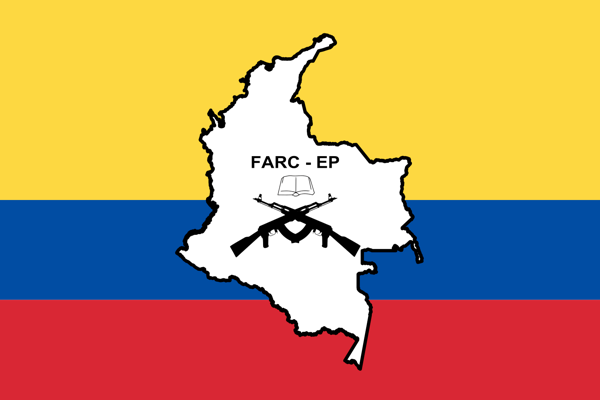
the flag of the Armed Forces of Colombia (FARC)
FARC was the political party, the opposition, just being also well-armed, and for sake of supporting their cash needs they also performed a pull of other activities: political kidnappings, and the drug trade.
The latter was a developed system with an established taxation system in the territories of their control, effectively protected by the FARC forces allowing no government presence at all, the farmers were allowed to grow cocaine and marijuana.
In 2012, after 50 years of the civil war, the very long negotiation started, yet it resulted in the national referendum, then the peace treaty got signed in 2016 when representatives of both sides met in Havana, Cuba.
It’s in your hands, of all Colombians, to decide with your vote to support this historic accord that puts an end to this long conflict between the children of the same nation, —
President Juan Manuel Santos (of Colombia) said, according to an Associated Press translation, prior to the national referendum on the peace treaty with FARC
The part of the deal touched the drug trafficking, so FARC stopped their worldwide cocaine trade, and allowed the government to develop the rural communities, whereto the feds had quite a limited access in times of war.
The drug legislation of the country was changing fast for good all time along the mentioned few years of negotiations for peace in Colombia.
Marijuana Laws in Colombia
The Law 1787, dated: 6th of July of 2016, is the main document for the cannabis market in Colombia, allowing production, trade, transport, import and export of medical cannabis, industrial hemp, or other scientific purpose, and by far not allowing explicitly the recreational trade except of the personal use (which is not the trade) with the 20 grams in personal possession, and 20 plants at home.
The business activity on cannabis should be licensed, as this law suggests, by National Institute of Control on Medical Substances, which is the Instututo Nacional de de Vigilancia de Medicamentos y Alimentos in Spanish.
That’s all for now about the marijuana in Colombia.
Oh, did you think it stopped trafficking?
Think again (2020-2022 update on marijuana in Colombia):
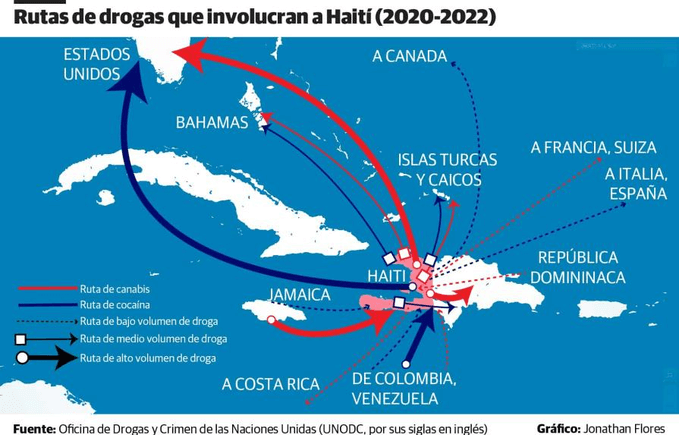
Download Stoner’s Cookbook App (Full Version)
Sat, 01/Jun/19
Stoner Chef 420’s best marijuana edible recipes are now the cookbook app! Pay no more for cannabis edibles but cook them instead, in your home (make sure it is totally legal in your place). It is for android, available for download right now, free of charge, by this link:
Stoner’s Cookbook app – Google Play link
Best Stoner’s Cooking Experiences, all in one cookbook app.
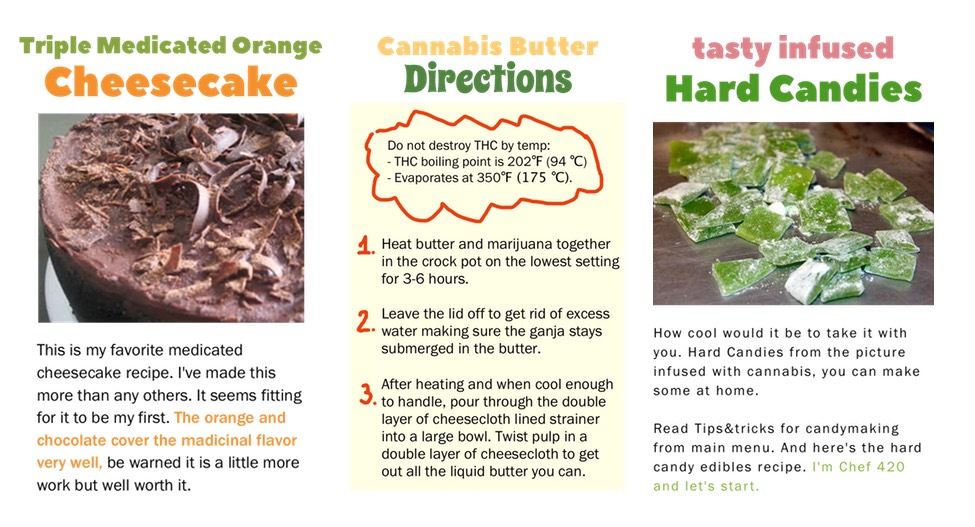
Get a free Stoner’s Cookbook app!
Marijuana Edible Recipes ➔
For those who prefer apk files, here the apk file by the link:

Download now! Enjoy weed cooking!
Stoner’s Cookbook app – APK file
The best selection of professional marijuana edible recipes from the famous Chef 420 (check his twitter page here). Loved by many stoner’s best cheesecake recipes, infused with cannabis, all secrets of cannabis candymaking, everything! including the very basics of marijuana edibles – cannabutter recipe and cannabis oil recipe. All in one, the perfect Beginner’s Cooking Guide for Stoners:

You Will Discover:
– Why do you want thermometer for stoner’s cooking weed edibles?
– Weed-cooking temperature regimes to keep the most of THC
– Canna candies and cheesecakes – infusing everything!
– Canna butter – the best way to store your weed
– Tips and tricks on cannabis candymaking
– THC Infused Blueberry Cheesecake
– Chef420’s Caramel Brownies
– Chef420’s Kahlua Brownie
– Infused Cannabis Oil
– Chocolate Cherry
– Butterscotch
– Get it!
The application is the handy stoner’s cookbook with the most premium recipes for marijuana edibles, you can cook in home conditions. It presents the effective alternative way to store the marijuana buds, at the first place, in a form of cannabis butter or cannabis cooking oil – find how do do that in this splendid free app. In case of cooking you loose none of the weed potency, yet it happens with smoking because you do not actually inhale all of it but when you it you eat all of it – that’s a 100% personal opinion, and not a guide, neither an advice, we have tried cooking weed for the first time couple of weeks ago, and it was an awesome experience. Yet you need follow the recipe very very accurately, especially about the temperature regimes, it’s not a simple quest I must say yet very engaging!
Download the Cannabis Stoner’s Cookbook
Marijuana Edible Recipes app ➔
